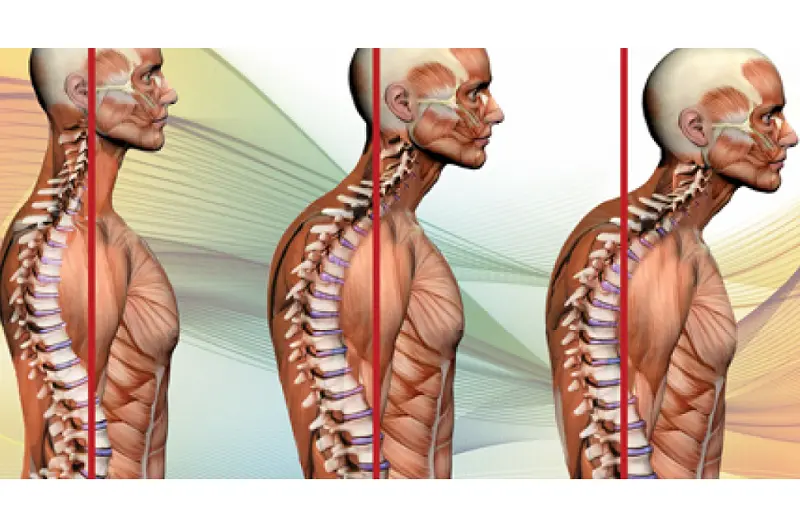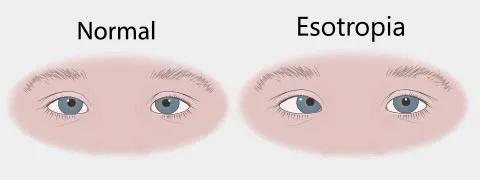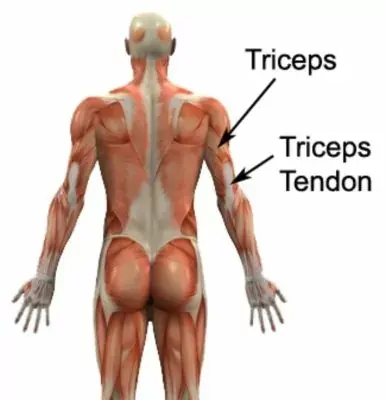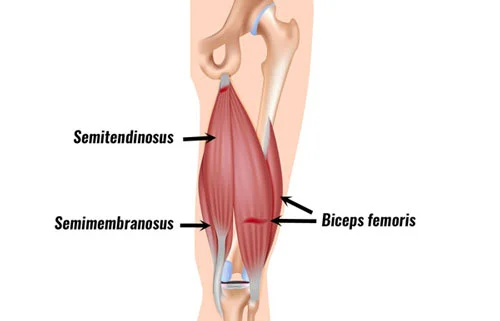Hump On Back Of Your Neck
Introduction
There are several reasons for a hump at the top of the spine or on the back of the neck. Muscle knots, osteoporosis, kyphosis, and cysts are a few possible reasons.
A person may call the hump on the back of their neck a “buffalo hump” or a “dowagers hump,” depending on what is causing it. A doctor may investigate it using a range of diagnostic methods, including X-rays and physical examinations.
A deposit of fat behind and slightly below your neck is known as a dorsocervical fat pad or buffalo hump, which is a bulge behind your shoulders. It’s one indication of lipodystrophy, the medical word for a disorder about the synthesis, utilization, and storage of fat in the body. Although a hump on its own may not necessarily require medical attention, it may indicate a dangerous underlying condition.
The causes, signs, diagnosis, and treatment of a hump on the back of the neck will all be covered in this article.
What is a Buffalo Hump?
Fat can accumulate behind your neck and cause a buffalo hump, or hump behind the shoulder. This illness isn’t always dangerous.
The formation of tumors, cysts, and other abnormal growths on your shoulders can also result in a hump. On occasion, a curvature in the spine may cause a hump.
Any physical changes to the back of your neck should always be discussed with your physician.
What causes a Hump behind the Shoulders?
Medication side effects or a medical ailment might also result in a hump behind the shoulders.
It might develop as a result of:
- An adverse reaction to a prescription drug (such as those for obesity treatment)
- Cushing’s syndrome, an uncommon disease characterized by an excess of the hormone cortisol in the body
- osteoporosis, a disorder that causes thinning bones
- prolonged usage of steroids
- Excessively thin bones are caused by osteoporosis, commonly known as brittle bone disease. The disease most commonly affects elderly persons and women going through menopause. This is a result of their bodies’ lowered calcium absorption capacity.
Bone abnormalities can result from osteoporosis. This illness can cause your spine to curve, giving the impression of a hump. We refer to this as kyphoscoliosis.
Cushing’s syndrome is also characterized by a hump in the back. Obesity around the waist, acne, persistent discomfort, abnormal menstrual cycles, and altered sex desire are all symptoms of this condition. Cushing’s syndrome results in fat accumulation behind the neck in addition to other alterations in the muscles and bones, such as weakening muscles and thinning bones.
The most common causes of a hump behind your shoulders are hormonally influenced conditions or medications, such as:
Medications. Fat that builds up behind your shoulders may be redistributed if you use corticosteroid medications for an extended period, such as hydrocortisone, cortisone, and prednisone. Because of their anti-inflammatory properties, these medications are used to treat inflammatory diseases.
Certain medications used to treat the human immunodeficiency virus (HIV) might potentially result in a hump behind your shoulders. This accumulation of fat, known as lipohypertrophy, is more frequently associated with older medications. This adverse effect is less common with more recent HIV medications.
Cushing’s syndrome. This is a disorder brought on by an excess of cortisol in the body. It could be brought on by a tumor that interferes with the hormones you produce. It may also arise as an adverse reaction to steroid use. Additional Cushing’s syndrome symptoms might be:
- Women’s irregular or nonexistent menstrual cycles
- Women with excessive face or body hair
- Men’s decreased desire for sex
- Male erectile dysfunction
- Male infertility has decreased
- Headaches
- Muscle weakness
- Fatigue
- Anxiety
- Depression
- Irritability
- Trouble thinking
- High blood pressure
- Difficulty controlling emotions
- Infections
- Skin darkening
- Impaired growth in children
- Bone loss
How does one detect buffalo hump?
A physical examination by your doctor is sufficient to identify a buffalo hump. Nevertheless, to determine the cause of the hump, tests will still need to be ordered.
Your doctor will inquire about your medical history and any new symptoms you may be having before beginning the procedure.
Typical testing consists of the following:
bone density test
blood test (to check your hormone and cortisol levels)
CT scan
MRI
X-ray
What Distinguishes a Dowager’s Hump From a Buffalo Hump?
The medical word for a dowager’s hump is kyphosis. This is a circular hunch that starts at your neck’s base. Usually, it results from a persistent forward-leaning posture. This may lead to the development of a lump of tissue at the base of your neck and a bend in the bones of your upper back over time.
Osteoporosis can also result in a dowager’s hump. Your upper spine may exhibit an increased forward curvature as a result of a compression fracture. You may tilt your head forward more than usual as a result of this. Another possible cause is an issue with the way your spine developed before birth…… Teenagers who experience Scheuermann’s kyphosis, another kind of kyphosis, develop an improperly formed spine.
Diagnosis
A physician may perform the following procedures to diagnose a hump or bump on the back of the neck:
- obtaining a thorough medical history
- mentioning the drugs of the day
- Assessing dubious moles
- doing bone density tests and a physical examination of the spine that includes X-rays to verify the vertebrae’s position
- utilizing bone density testing and X-rays to verify that the vertebrae are aligned
- assessing breathing capacity, checking for spinal cord compression using an MRI, and doing a physical examination to look for any anomalies in the skin and underlying tissues, which may entail tapping regions.
What’s the Treatment for a Hump Behind Your Shoulders?
The reason for a hump behind your shoulders will determine the course of treatment. Among the possible treatments are:
Modification of medication. Your doctor may decide to withdraw or modify your medication if it is the reason for the hump behind your shoulder.
To deal with the effects of the underlying disease causing your hump, you might need to take medication. It is not advisable to alter your medication without first seeing your physician.
The best way to treat the hump is to deal with the underlying issue that brought it on. Cosmetic surgery may be able to eliminate fat accumulation in certain circumstances. But if the underlying problem isn’t addressed as well, the hump can come back.
Consult your doctor about adjusting your dosage or transferring therapies if a side effect of a prescription drug causes the hump.
Never discontinue using a prescription drug without first seeing your physician.
If obesity is the cause of your hump, you may be able to alleviate it with diet and exercise.
Modification of medication. Your doctor may decide to withdraw or modify your medication if it is the reason for the hump behind your shoulder.
To deal with the effects of the underlying disease causing your hump, you might need to take medication. It is not advisable to alter your medication without first seeing your physician.
You might need to take medication if you have osteoporosis to keep it from growing worse. Treatment options for osteoporosis include a variety of medications, vitamins, and mineral supplements. Your physician will collaborate with you to identify the best course of action.
Surgery. Your doctor may do surgery to remove the tumor if it is the reason for the hump behind your shoulders. This can include fatty tumors that comprise the hump itself or tumors that interfere with your body’s ability to produce hormones.
Lifestyle changes: Lifestyle changes can address some underlying reasons for a hump behind your shoulder, including:
- Exercise and diet to reduce weight
- Having better posture can help treat postural kyphosis.
- Physical treatment to acquire exercises for strengthening the neck
- Weight-bearing activities to stop osteoporosis from worsening
Prevention
There’s no certain technique to keep your back from developing a hump. However, there are things you can do to lessen the likelihood that you will get one.
Make sure you get the recommended daily intake of calcium and vitamin D to prevent osteoporosis. Your doctor could recommend calcium supplements if you have a medical condition that makes it difficult for you to absorb calcium from meals. They are also available online.
In addition to eating a balanced diet that includes foods from all the food categories, you should exercise often to reduce your risk of obesity and weakening bones.
You should raise your daily calcium intake from 1,000 to 1,800 mg if you are over 51 or going through menopause. Before increasing your calcium intake, always consult your doctor, particularly if you are on any drugs or have a family history of osteoporosis.
Complications
Depending on what created it, a hump on the back of the neck might lead to various issues.
Osteoporosis-related hump patients have a high risk of further fractures and permanent disability.
The American Academy of Orthopaedic Surgeons states that osteoporosis increases the risk of fractured bones in 1 in 2 women and 1 in 4 men over the age of 50.
Although these side effects are uncommon, severe kyphosis, or rounding of the upper back, might cause breathing difficulties as well as persistent tingling and weakness in the legs.
The illness or condition that initially caused the hump to emerge will be the main source of difficulties. Your neck may sag so much that it becomes hard to turn back. Additionally, it could make it difficult for you to tilt your head from side to side.
Although this kind of hump seldom hurts, if it does, let your doctor know right once.
The sight of the hump may cause some people to feel worried or disturbed. See your doctor to talk about treatment options if you have signs of depression or excessive stress.
Sepsis and scarring are rare but possible side effects of boils and carbuncles.
Because moles may indicate melanoma, they should be taken seriously. Despite the rarity of this, individuals should be aware of moles that are:
- growing
- itching
- bleeding
- becoming darker
- changing in any other way
When to see a doctor?
If a person experiences pain from the hump on the back of the neck or if their boils are not healing with home remedies, they should consult a physician.
An individual may want to take note of their posture as they become older. They should consult a physician if they observe any curvature of the spine, since this may indicate osteoporosis.
Outlook
The causes of a person’s back neck hump is directly related to the person’s result.
Being proactive can lower the chance of fractures and limit the rate at which osteoporosis-related bone loss progresses. They can take actions like exercising and maintaining a nutritious diet.
Childhood-onset kyphosis symptoms can be treated with early diagnosis and treatment to help straighten the person’s spine before they reach maturity.
Researchers have discovered that patients with buffalo hump or dorsocervical fat pad removal surgery typically report positive outcomes.
Individuals who have skin conditions such as cysts, boils, carbuncles, or moles and have lumps on the back of their neck, usually have a fair prognosis. Usually, boils clear up in two to three weeks.
FAQs
How do you fix a hump on the back of the neck?
It is advised that you strengthen your muscles, enhance your joint mobility, and maintain proper posture if you have neck humps caused by poor posture. You can get assistance from chiropractors and/or physical therapists to treat posture-related neck humps.
What is the most effective way to deal with the bump on the nape of my neck?
Adjust your body alignment.
keeping your posture in mind when doing anything, even watching TV.
Maintain a neutral, level head posture.
Frequently changing positions.
extending the shoulder and neck muscles gently.
keeping your shoulders back.
Maintaining a tall and straight spine.
Will the neck hump go away?
Fortunately, bracing, regular exercise, and improved posture can minimize the formation of this hump and prevent neck problems in the future.
Is it possible to get rid of a neck hump naturally?
The Simple Way to Get Rid of Neck Hump (Kyphosis) | Woman’s…
Regular exercise and postural stretches may help lessen the look and eliminate a neck hump if it is only due to excess fat.
How long does it take to fix the neck hump?
The neck hump can be corrected, which is excellent news. It might take several months or years, depending on how severe it is. Even while it might not be able to be cured if its condition is bad, you can still make improvements with the right workouts.
References
- What gives the back of the neck its hump? https://www.medicalnewstoday.com/articles/hump-on-the-back-of-the-neck#summary
- Hump Behind the Shoulders. Healthline. https://www.healthline.com/health/hump-behind-the-shoulders
- What to Know About a Hump Behind Your Shoulders. https://www.webmd.com/osteoporosis/what-to-know-hump-behind-shoulders








One Comment